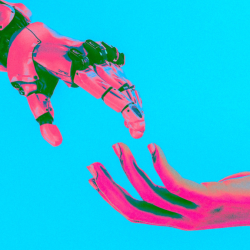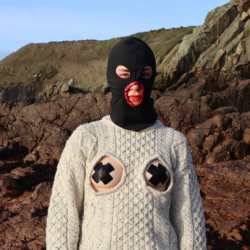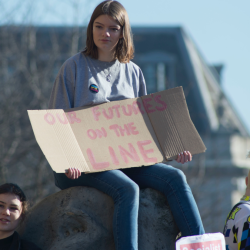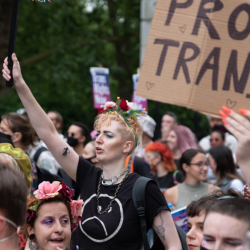Binaries are interesting, no?
The English language loves to pair opposites; it gives, as poets might say, pace and punctuation to a sentence to talk about creation and destruction, birth and death, right and wrong, black and white. But… What if the thing that makes a line read well isn’t a rule that applies to life? There’s substantial evidence that language shapes cognition, that our mother tongue quite literally moulds what we pay attention to and how we shape ideas. The artist Shirazeh Houshiary has been thinking about this for a while.
For 2012’s Venice Biennale Houshiary created a site specific installation in the city’s Arsenale entitled ‘Breath’. In it, she brings together the prayers of the three largest Abrahamic faiths spoken aloud simultaneously in an echo chamber. If these prayers come from religions that share some core beliefs (and I claim no detailed knowledge of comparative theology that allows me to delve deeper), then it is true that the cultures these faiths and the words they speak in prayer have shaped are quite different. Houshiary’s work then, for me at least, surfaces the idea that words shape the way we perceive the world. It’s a thought that, like all the good thoughts, was had by lots of people before me.
“To have another language is to possess a second soul” said the fabulously violent, fabulously successful Emperor Charlemange, who presaged the work of linguists like Benjamin Lee Whorf in thinking that language can structure our perception of reality. More recently, scientists like Lera Boroditsky, an assistant professor of psychology, neuroscience, and symbolic systems at Stanford have been able to prove this concept experimentally. We now know through data that the languages we use quite literally change how we experience the world, at a conceptual and sensory level. So, at the start of this new year, what should we think about this month’s theme of creation and destruction? I think perhaps, we should think about it cautiously.
If even the language of the prayers of three religions that feature shared stories can shape the worlds around them so differently, how do we find a way to bring the binaries-loving English language into our globalised time? It is after all a time where all our effort is needed to connect meaningfully with one another against the myriad forces driving disconnection and misunderstanding. Housiary’s piece suggests to me that there is a way to think about creation and destruction, and that is by staying aware that a search for binary answers may simply be a quirk of our language. What feels instinctively true to us; that for newness we must destroy the old, may not be true at all. It may just scan nicely.
Featured image: Michelangelo Buonarroti / Pexels































